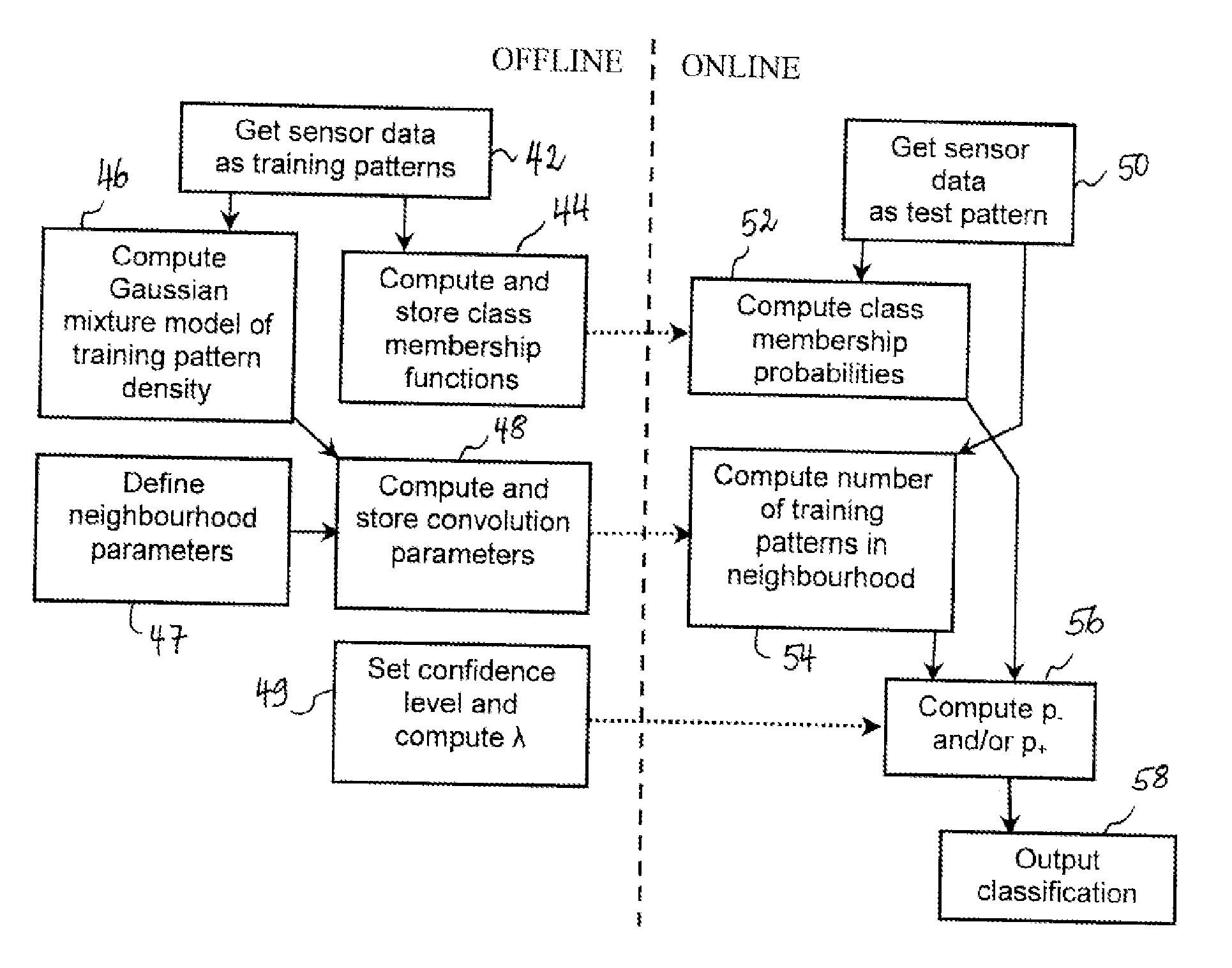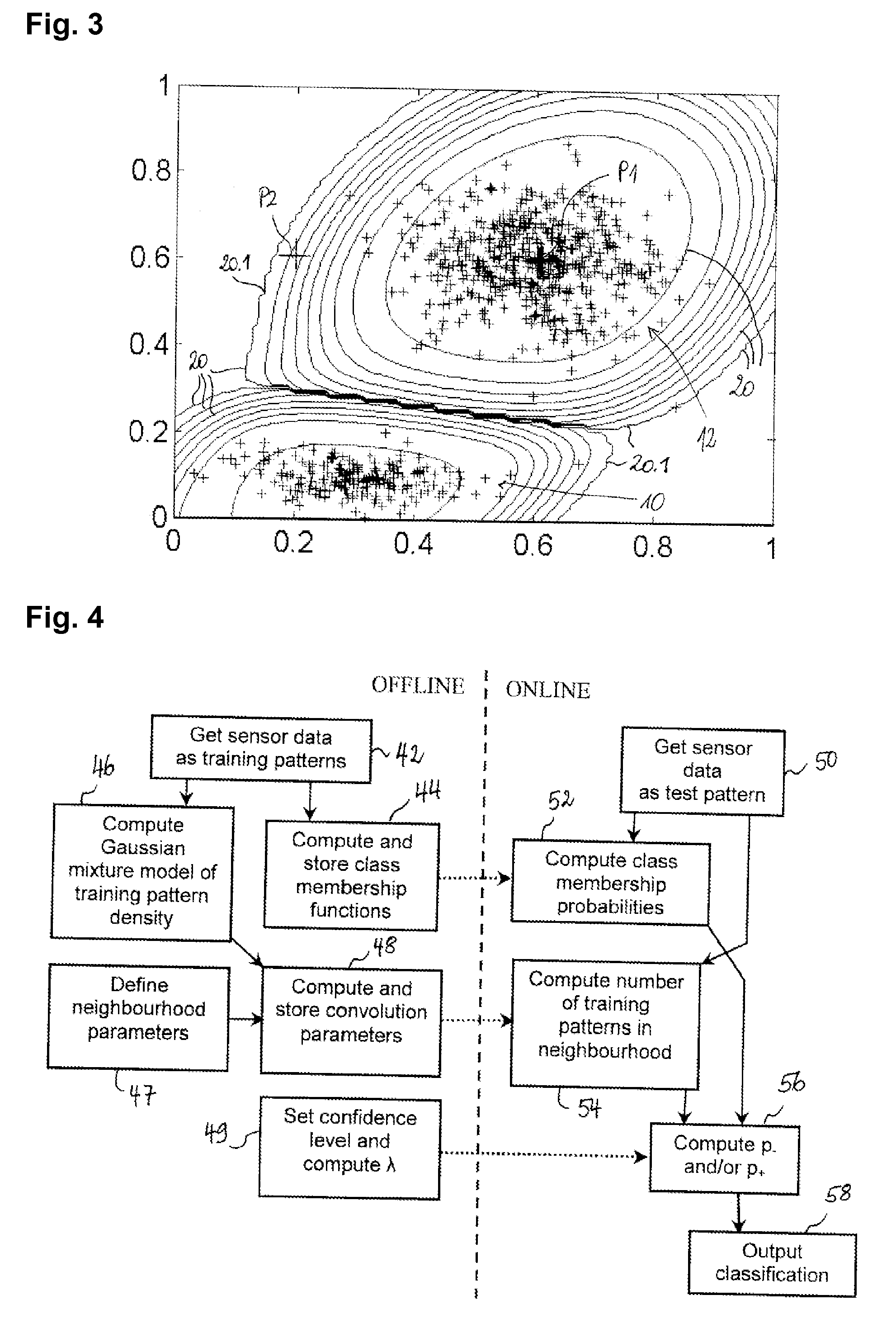Pattern classification method
a pattern and classification technology, applied in the field of pattern classification, can solve problems such as requiring a considerable amount of computational power
- Summary
- Abstract
- Description
- Claims
- Application Information
AI Technical Summary
Benefits of technology
Problems solved by technology
Method used
Image
Examples
Embodiment Construction
[0024]FIG. 1 shows an example of a two-dimensional feature space with two clouds 10, 12 of data points 14 representing training patterns belonging to two different classes. In the case illustrated, the patterns of the feature space can be unambiguously expressed as array having as array elements the coordinates of the corresponding data points 14. Collection of training patterns can e.g. be achieved by exposing the sensor or sensors whose outputs are to be assigned to different classes to situations whose classification is known. In the present case, the representation of the collected patterns yields two clouds 10, 12 corresponding to a first class and a second class.
[0025]Once the training patterns have been collected, the class membership probability functions are generated on the feature space. This can be done by various methods that are well documented in literature. FIG. 2 shows the separation of the feature space by a second order discriminant function that has been trained ...
PUM
 Login to View More
Login to View More Abstract
Description
Claims
Application Information
 Login to View More
Login to View More - R&D
- Intellectual Property
- Life Sciences
- Materials
- Tech Scout
- Unparalleled Data Quality
- Higher Quality Content
- 60% Fewer Hallucinations
Browse by: Latest US Patents, China's latest patents, Technical Efficacy Thesaurus, Application Domain, Technology Topic, Popular Technical Reports.
© 2025 PatSnap. All rights reserved.Legal|Privacy policy|Modern Slavery Act Transparency Statement|Sitemap|About US| Contact US: help@patsnap.com



